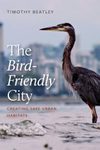About this book
Sprawl creates and contributes to habitat loss, fragmentation, pollution, and a host of other environmental problems. This new collection focuses on the impact of sprawl on biodiversity and the measures that can be taken to alleviate it. With contributions from biological and social scientists, environmentalists, conservationists, and land-use professionals, Nature in Fragments examines the genesis of sprawl, its effect on species, and the ways in which it alters natural communities, ecosystems, and natural processes. Issues discussed include the impact of sprawl on freshwater ecosystems, the economics of biodiversity in urbanizing landscapes, building public awareness of the impact of sprawl, conserving biodiversity through better-informed planning, and assessing the effectiveness of conservation efforts.
The contributors illustrate the need to more comprehensively integrate biodiversity issues, concerns, and needs into the growing number of antisprawl initiatives, including the "smart growth" and "new urbanist" movements. By combining scientific and public-policy discussions, this collection enriches the efforts of those working to create more sustainable human environments.
Contents
PrefaceAcknowledgmentsContributorsPart I Biodiversity and the Genesis of Sprawl 1. The Context and Causes of Sprawl, by Barbara L. Lawrence2. The Impacts of Sprawl on Biodiversity, by Elizabeth A. Johnson and Michael W. KlemensPart II Sprawl, Ecosystems, and Processes 3. Freshwater Wetland Biodiversity in an Urbanizing World, by Nicholas A. Miller and Michael W. Klemens4. Ecosystems, Disturbance, and the Impact of Sprawl, by Seth R. Reice5. Bees, Pollination, and the Challenges of Sprawl, by James H. Cane6. Effects of Urbanization on Decomposer Communities and Soil Processes in Forest Remnants, by Margaret M. Carreiro7. Sprawl and Disease, by Fred W. Koontz and Peter DaszakPart III Sprawl and Species 8. Sprawl and Species with Limited Dispersal Abilities, by Diane L. Byers and Joseph C. Mitchell9. Sprawl and Highly Mobile or Wide-Ranging Species, by Justina C. Ray10. Species that Benefit from Sprawl, by Stephen DeStefano and Elizabeth A. JohnsonPart IV Identifying and Meeting the Challenges of Sprawl 11. Maintaining Connectivity in Urbanizing Landscapes, by M. A. Sanjayan and Kevin R. Crooks12. The Economics of Biodiversity in Urbanizing Ecosystems, by Stephen Farber13. Conserving Biodiversity Through State and Regional Planning, by Jessica Wilkinson, Sara Vickerman, and Jeff Lerner14. Integrating Conservation of Biodiversity into Local Planning, by Jayne Daly and Michael W. Klemens15. Building Public Awareness About the Effects of Sprawl on Biodiversity, by Cynthia Coffin and Jane Elder16. Creating a Framework for Change, by Michael W. Klemens and Elizabeth A. JohnsonIndex
Customer Reviews
Biography
Elizabeth A. Johnson is manager of the Metropolitan Biodiversity Program of the Center for Biodiversity and Conservation, American Museum of Natural History. Michael W. Klemens is a senior conservationist at the Wildlife Conservation Society and director of its Metropolitan Conservation Alliance.



































